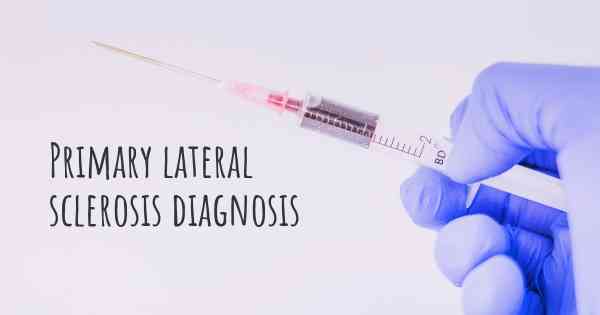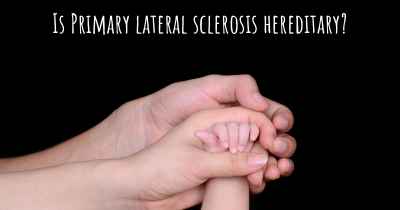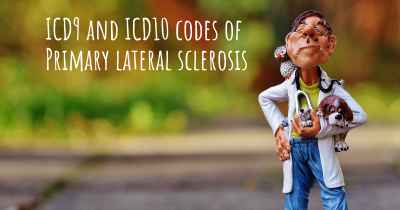How is Primary lateral sclerosis diagnosed?
See how Primary lateral sclerosis is diagnosed. Which specialists are essential to meet, what tests are needed and other useful information for the diagnosis of Primary lateral sclerosis

How is Primary Lateral Sclerosis Diagnosed?
Primary lateral sclerosis (PLS) is a rare neurological disorder that affects the upper motor neurons in the brain and spinal cord. It is often misdiagnosed or confused with other conditions due to its similarities with other motor neuron diseases such as amyotrophic lateral sclerosis (ALS). Therefore, an accurate diagnosis is crucial for appropriate management and treatment. The diagnosis of PLS involves a comprehensive evaluation that includes medical history, physical examination, and various tests.
Medical History
The first step in diagnosing PLS is a detailed medical history. The healthcare provider will ask questions about the patient's symptoms, their onset, progression, and any associated factors. It is important to provide a thorough and accurate account of symptoms, as this information helps in ruling out other conditions and narrowing down the diagnosis.
Physical Examination
During the physical examination, the healthcare provider will assess the patient's muscle strength, reflexes, coordination, and balance. In PLS, the upper motor neurons are primarily affected, leading to muscle weakness and spasticity. The examination may involve testing muscle tone, reflexes, and evaluating the presence of Babinski's sign (upward movement of the big toe when the sole of the foot is stimulated).
Electromyography (EMG)
EMG is a diagnostic test that measures the electrical activity of muscles and the nerves controlling them. It is a key tool in differentiating PLS from other motor neuron diseases. In PLS, the EMG results typically show normal or slightly abnormal findings, indicating that the lower motor neurons are not significantly affected. This helps in distinguishing PLS from ALS, where both upper and lower motor neurons are involved.
Magnetic Resonance Imaging (MRI)
MRI uses powerful magnets and radio waves to create detailed images of the brain and spinal cord. It is often performed to rule out other conditions that may mimic PLS, such as multiple sclerosis or spinal cord tumors. In PLS, the MRI findings are usually normal, as the upper motor neurons are primarily affected, and structural abnormalities are not typically observed.
Cerebrospinal Fluid Analysis
Cerebrospinal fluid (CSF) analysis involves collecting a sample of the fluid that surrounds the brain and spinal cord through a lumbar puncture (spinal tap). This test helps in ruling out other conditions that may present with similar symptoms, such as infections or inflammatory disorders. In PLS, the CSF analysis is usually normal, further supporting the diagnosis.
Genetic Testing
Genetic testing may be recommended in some cases, especially when there is a family history of PLS or other motor neuron diseases. PLS can be inherited in an autosomal dominant pattern, meaning that a mutation in a specific gene can increase the risk of developing the condition. Identifying these genetic mutations can help confirm the diagnosis and provide valuable information for genetic counseling.
Neurological Consultation
Due to the complexity and rarity of PLS, a consultation with a neurologist who specializes in motor neuron diseases is often necessary. They have the expertise and experience to interpret the results of various tests and make an accurate diagnosis. The neurologist will review the medical history, physical examination findings, and test results to determine if the symptoms align with PLS.
Follow-up and Monitoring
Once a diagnosis of PLS is made, regular follow-up appointments are essential to monitor the progression of symptoms and provide appropriate management. The healthcare provider may recommend additional tests or imaging studies over time to track the changes in the upper motor neurons and rule out other conditions that may develop.
In conclusion, diagnosing Primary Lateral Sclerosis involves a comprehensive evaluation that includes medical history, physical examination, and various tests such as electromyography, magnetic resonance imaging, cerebrospinal fluid analysis, and genetic testing. A consultation with a neurologist who specializes in motor neuron diseases is often necessary to make an accurate diagnosis. Regular follow-up appointments are crucial for monitoring the progression of symptoms and providing appropriate management.
Posted Mar 4, 2017 by hank 1470








